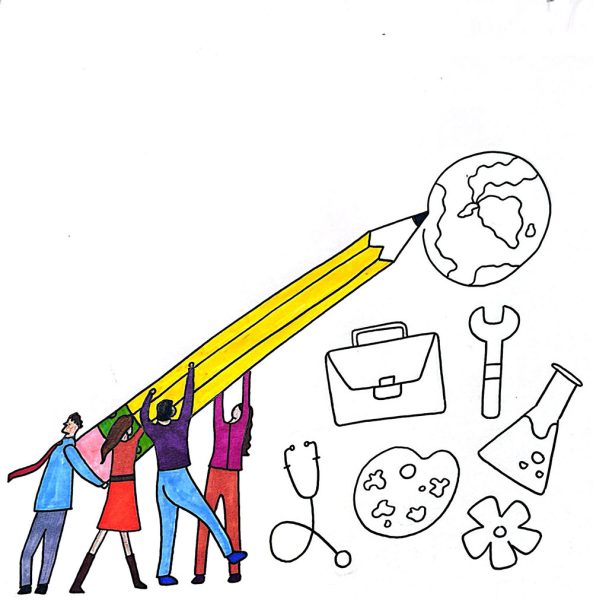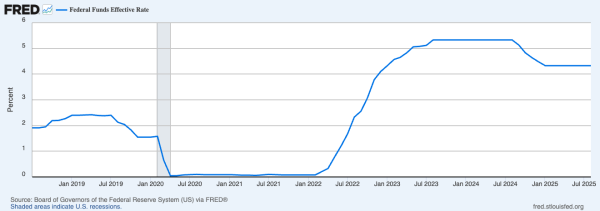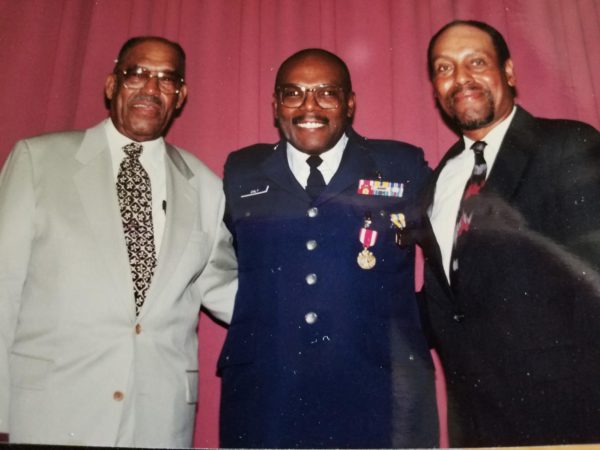Long Division
Examining our increasingly fragmented political landscape
“Until recently, we were split between left and right, but now we have become divided along finer ideological divisions within each party.” Image: “Flags 1” by Jasper Johns. Open access, Cleveland Museum of Art.
I am so honored to receive such a nice letter from such a fantastic student. we have become divided along finer ideological divisions within each party.cThis election year, America voted for Joe Biden.
At publication, many Republicans are starting to admit this, since the heinous assault on American democracy by way of the Capitol invasion shows just how dangerous it is to give credence to attempts to overturn an election.
When the news of Biden’s win broke, some took to the streets to celebrate. Others lamented the “massive voter fraud” that must have happened and swore that they would keep Trump president.
America has been divided for decades. Until recently it was split primarily between left and right, but now we have become divided along finer ideological divisions within each party. I set out to understand why.
I interviewed a Trump supporter and a moderate anti-Trump Republican to see why the right fractured. Neither interviewee is a BHS student, but this does not affect their views or the impact of the issues.
Since the pandemic is a hot button issue — the defining issue of this election — I asked about this first.
“The federal government offered supplies,” the pro-Trump Republican told me. They argued this was good because states were able to make requests based on their needs.
Unfortunately, this is not entirely true. According to a mid-March New York Times report, Trump told governors to get the supplies (ventilators, masks, etc.) on their own.
During a Fox virtual town hall, he explained his approach to cooperating with the states.
“[The governors] have to treat us well also,” he said.
It’s reasonable to infer that he meant that governors shouldn’t criticize his handling of the pandemic if they want supplies from the federal government.
The anti-Trump moderate views the response slightly differently. They approve of Ohio’s response and of giving the states more control of the issue, but they disagreed with Trump’s calls to open up the country, calling his arguments “ridiculous.” They felt similarly about personal freedom arguments against public safety protocols. They felt bad for those negatively impacted by the halted economy, but seemed to view it as a necessary evil, given anti-transmission guidelines.
Their beliefs about the election are also widely different. The Trump supporter was adamant that absentee ballots are acceptable but mail-in ballots are not.
“Absentee ballots [are] okay [because] they’re requested. [Universal mail-in voting] is not okay [because] voter rolls are inaccurate.”
It appears that the Trump supporter concurs with the departing president’s accusations of voter fraud, citing little evidence other than the president’s assertions. After the election, the supporter took to social media to post Sidney Powell’s “Kraken” claims and other conspiratorial allegations of voting machine tampering.
These claims of voter fraud were rejected even by the head of Trump’s Justice Department, AG William Barr.
“DHS and DOJ have looked into that, and so far, we haven’t seen anything to substantiate that,” he said.
The Trump opponent disagreed with the claims of fraud and recognized mail-in ballots as “just another way of voting.” This lines up more with the facts — despite claims that subversive radicals voted on behalf of deceased people to give Biden an unfair electoral advantage. Fact-checkers have conclusively disproved this myth.
The Trump campaign argued that one citizen, Deborah Jean Christiansen, cast a ballot after her death, but there was no ballot cast in her name since she was marked as deceased and was not sent one. According to an Associated Press article on the matter, a different woman with the same name did vote, in what appears to have been a simple case of mistaken identity. This was confirmed by Cobb County Director of Elections Janine Eveler.
Another woman, Linda Kesler, was alleged to have voted while dead as well. But as the AP explains, there was no ballot sent in her name; there was one sent in by Lynda Kesler, who is very much alive and also has different personal information because she is a different person.
Another woman, who voted as Mrs. James E. Blalock Jr., was mentioned in a claim that Mr. James E. Blalock Jr., her deceased husband, voted. As the NYT and AP found, she has always voted under this name.
These slanderous accusations are similar to Ronald Reagan’s “welfare queen” rhetoric during the 1980s. This racist, sexist claim was and still is used to justify cutting programs intended to alleviate poverty, by, at best, providing exaggerated examples of outliers. Here, Trump and his allies blow out of proportion a story that has been verifiably proven false. It’s clear that this attack on legitimate votes is unfounded.
Perhaps the most important topic is where their beliefs come from. Their chosen sources draw the lines of their beliefs. I asked them to list good and bad news sources.
Unsurprisingly, their responses were opposite each other. The Trump supporter reads Breitbart and the Epoch Times and is critical of the “mainstream media” (because they “pick and choose” facts). They also consider Donald Trump to be their most important political influence.
The preference for these sources is likely due to the overwhelmingly partial coverage Trump receives in their chosen sources. This cycle of confirmation keeps them from seeing other views, specifically those critical of the 45th president.
The anti-Trump interviewee reads the New York Times and the Washington Post and opposes Fox, the Huffington Post, Breitbart and Buzzfeed. The sources they identified as credible are reputable media, and the four sources they named as biased are known for sensational coverage.
Clearly, the moderate is better informed than the Trump supporter; former Breitbart executive chairman Steve Bannon reportedly called Breitbart the “platform for the alt-right,” and the Epoch Times is known among other things for publishing conspiracy theories. The New York Times and the Washington Post, by contrast, are well-respected for breaking big stories, for publishing facts and winning the most and second most Pulitzer Prizes of any newspaper, respectively.
The Trump-supporting conservative, who decried Snopes, uses sources widely understood to be uncredible. Because media consumption influences beliefs, the Trump supporter will be more inclined to believe misinformation from Trump-supporting media, while the moderate will most likely believe what the more balanced media says.
These alternate sources of news–of reality–would explain why each continues to believe what they believe, though the moderate was more opposed to echo chambers. The moderate uses a fair balance of sources and asserts that one “should challenge their beliefs.” The Trump supporter actually said the same thing: “You should challenge your beliefs.” Given their choice of sources, though, it is clear that even if they do challenge their beliefs by perusing other media, it is for naught.
There are a lot of buzzwords being thrown around in today’s political discourse, and I asked them each to define some.
Their definitions of communism were that of a pseudo-left wing authoritarian system of government. The Trump supporter explained it as a government exerting its power to equalize resources: “[It’s] an authoritarian government that looks to nationalize everything on an equal scale,” they said.
The anti-Trump moderate described it relatively similarly: “[It has] heavy censorship of anti-communist ideas. [It’s] not nationalist, but it has similar feelings toward the government […] The government regulates the means of production [and] it ends up not being led by the people.”
These definitions are far from actual Marxism (this would be the abolition of borders and the unification of the international working class) but more or less match the colloquial definition used today.
The supporter also called Representative Ocasio-Cortez a communist (“‘Would you consider [her] a communist?’ ‘She is.’”). But this is almost certainly because of the common use of the word. With many media sources using the word to describe publicly-funded social programs and business regulations in an effort to vilify opponents or to clickbait audiences, it is easy to understand why individuals attach this meaning to the word.
This goes back to the Red Scares of the previous century, with “communism” used not to describe communist ideology but as a catch-all word to vilify politics the user disagrees with. Because of this common use of the word, both interviewees had biased understandings.
They were a bit more accurate in defining fascism. The pro-Trump interviewee described fascism as total state control: “[It is] an authoritarian government that looks to nationalize everything.”
The anti-Trump Republican defined fascism as a racist, anti-democratic militaristic dictatorship. “[There is] one supreme leader who has control of the military [with] no freedom of the people […] Also, extreme nationalism and racial superiority. [It is] anti-communist and anti-liberal.” Neither one described Trump as fascist, which is unsurprising when taking their definitions into account.
The Trump supporter argued that Trump has condemned fascism and that his “stand back and stand by” comment was ascribed a meaning he did not intend. The opponent denied this and argued that Trump would be a fascist if he could be.
“If there weren’t the checks and balances of the American government, [Trump] would be a fascist,” they said.
It’s revealing, then, that according to ex-wife Ivana and a Vanity Fair interview with a Trump associate in 1990, Trump kept at his bedside My New Order, a collection of Hitler’s speeches. Also telling is John Bolton’s allegation that Trump told Xi Jinping to proceed with concentration camps built to commit genocide against the Uyghur people.
There was some common ground between the two interviewees, though, even with the almost unprecedented extent of division.
Both favor smaller government, agreeing that the Senate’s equal representation of states helps to balance the House’s proportional representation. Both support making Election Day a federal holiday to increase turnout but oppose voucher-based publicly funded elections. And while they are split on a host of issues, they agree on foundational ones.
So it would seem that Trump and Trumpism form the wedge driving the conservative faction apart. His words and ideas split the party he ran for, and it ended with his defeat as Republican former officials, donors and voters defected to try to get back to a sense of normalcy.
He alienated many small-government people through his policies of putting federal agents in states during the Black Lives Matter protests, he alienated science-supporting conservatives by asserting that climate change is fake and by declining to wear a mask, and he alienated other leading figures on the right through his populist rhetoric.
After the election, some Georgia Republicans called for boycotts of the runoff elections, and some leading Trump supporters have called for secession. This seems to be the largest call for secession in recent history, if not since the Civil War.
Other Republicans, like Georgia’s governor and secretary of state, have recognized the election as legitimate. Those who echo Trump’s claims seem more open to further tearing apart the nation. This divide in the conservative faction has led to speculation that Trump’s rhetoric helped cause Republicans to lose the runoffs in Georgia.
I did not interview people on the left for this piece because the left, though fractured during the primaries, seemed to better unite in the general election. However, it is still important to note the divide between progressive and moderate Democrats. Currently, the most contentious issue would be expansion of the Supreme Court, which would almost certainly require abolishing the filibuster.
Moderate Democrats, including West Virginia Democratic Senator Joe Manchin, have said that they would not vote to eliminate the filibuster. This almost certainly ensures that Congress will be unable to do much. Progressive Democrats, though, want to abolish the filibuster to expand the court not just as a response to the three justices Trump appointed but also as a way to ensure liberal legislation is allowed to stand. This is both a reason for and a reflection of the division on the left.
The United States is a nation divided. These political divisions exist for many reasons, but while the split between the left and the right is clear, the new rift among conservatives is not. Certainly the media and social media are contributing to this divide, and while it would be irresponsible to blame the media alone, it is no secret that content is curated for clicks. Too many biased sources use sensational headlines that play into confirmation biases to engage and keep their viewers.
But much of what they publish isn’t true. That’s why it’s crucial we put our minds to the task of being informed media consumers and critical thinkers. In Beachwood and beyond, we are all faced with the same challenge. In order to face this challenge, we can use easily-available resources.
Snopes and other fact-checkers are important tools, though often criticized by politicians and their followers who would prefer not to have their facts checked. Also, researching the credibility of a news source can help a person know whether or not it is reliable.
In an era of untruth, it is the responsibility of the publisher to verify their information. But until that happens, it is up to each of us not to be taken in by lies, be it by their candidate or by the media. And while some on the left are guilty of it, this practice has found a home on the right, particularly among Trump’s audience. As we learned the hard way the past few years, when truth and fiction are hard to distinguish, people do not think clearly.










![“My parents have always said that education is important. My parents are Chinese immigrants, I'm Chinese American, [and that's a] value that has always been ingrained in our community,” said Senior Lyndia Zheng, pictured with Tony Zheng](https://bcomber.org/wp-content/uploads/2025/10/DSC_4244-600x400.jpg)

